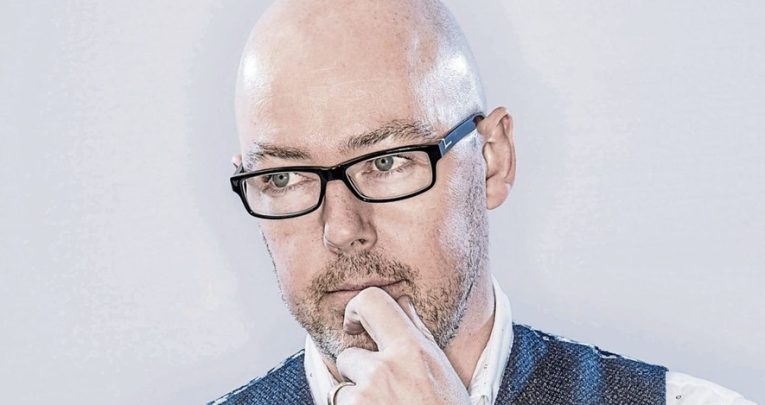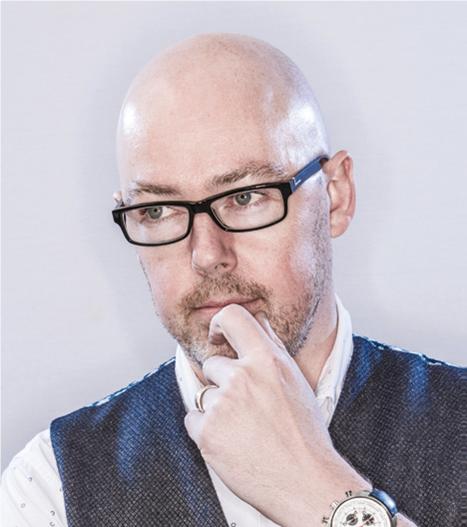“Who were these ‘Nazis’?” John Boyne on what made him a reader

Without Ian Serraillier’s The Silver Sword, John Boyne might never have written his own children’s classics…

- by John Boyne

I don’t remember actually learning to read, but I do have memories of going to the library a lot. We had a fantastic one just down the road from my house; and we’d often spend Wednesday afternoons there, because that used to be a half day from school.
I loved being able to browse those shelves, pick a title and just start to read it, there and then. I’ve always got a real kick out of books – not just the content, but the physical item itself; the feel of the paper in my hands.
I wouldn’t call myself a book hoarder now, although I used to be. When I first went to work for Waterstones I got sent loads of books, proof copies and so on, and I would keep everything. But who has space for that, really?
These days I tend to have a little cull of my shelves once a year or so. There’s not much point storing books for the sake of it – anything I do hang onto needs to have a special place in my mind; it has to connect me to a time and a place when I first read it.
The Silver Sword is one book I have kept from my childhood. I read it at the age of ten or so, and always credit it as being my first introduction to the subject of World War II, which of course is a topic I’ve come back to in my own writing.
It was probably the jacket that appealed to me at the time – I was just moving away from my Secret Sevens and Famous Fives, and looking for something a little more serious.
I found it scary and exciting – the terrors the children experienced in the book left me frightened, but also wanting to know more. Who were these ‘Nazis’? What was going on?
I also have an edition of Wind in the Willows I got when I was 11 – it’s pretty battered, with my childish scribbles and drawings in the margins. And I still have all the Narnia books, which my mother got for me when I had an appendix operation.
I was a great reader from very early on. I started on Dickens’ orphan stories when I was about 12; and then I saw – and persuaded my parents to subscribe to – one of those ‘collector magazines’ for ‘classic novels’.
Every two weeks they’d send you a book, beautiful and leather-bound, with a magazine telling you about it. The first was Pride and Prejudice, then Wuthering Heights, then Jane Eyre, and so on. I read them all, desperate to get through each one in the fortnight before the next would arrive.
There is such a rich stream of contemporary children’s fiction now, that perhaps young people are less likely to pick up the classics straight away – but given the choice between that, and how it was when I was a child, I’d certainly take the present.
We never had authors coming in to visit us at school – because all the people who’d written what we were reading were dead! Besides, once children find good writing, of any kind, they’ll seek out more and be taken in all sorts of new directions.
I don’t get into schools much any more, unfortunately – but one thing that has surprised me over the past ten years of being part of the world of children’s writing is the extraordinary passion, commitment and enthusiasm that’s out there.
In my head, I suppose I thought that kids don’t read any more – but they do, they love it, as long as they are allowed to explore and make their own choices.
They’re discerning, too; you often hear adults say they ‘never give up on a book’, but I reckon life is too short to plough through a 50,000 word story you aren’t enjoying – and that’s how children think, too.
By the way, my latest book, The Boy at the Top of the Mountain (Doubleday, £12.99, out now) revisits the subject of WWII – but it’s not a sequel to The Boy in the Striped Pyjamas.
I know that the publishing trend at the moment is for series – but I prefer standalone books; I feel, if a kid likes a book of mine, he or she shouldn’t have to read another one straight away, let alone six or eight.
There are some great series, of course – think of JK Rowling and Philip Pullman – but for me, there is something special about saying everything you want to say about a subject in a single book.
John Boyne’s recommended authors
- Siobhan Dowd
She is one of the greats of the last 15 years, and it is so sad she is no longer with us.
Yes, some were antagonistic when The Bunker Diary won the Carnegie Medal, but I think it’s terrific, with exactly the kind of resourceful central character young people should be reading about.
I loved When Mr Dog Bites, his brilliant debut novel from last year.
She’s a phenomenon. I’ve been at literary festivals with Jackie, and have never seen anything like the queues of children desperate to talk to her.










